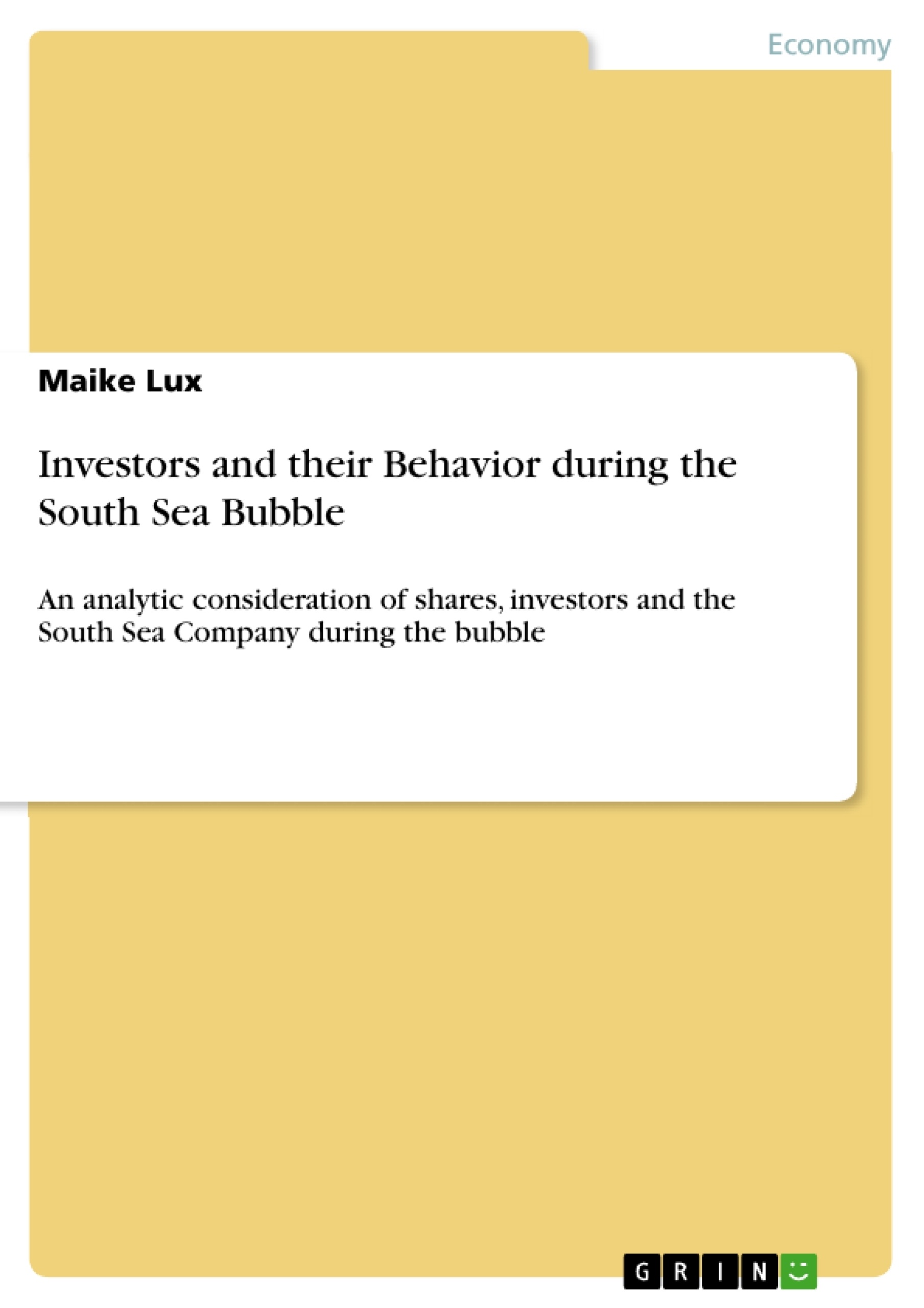In this essay I will examine the investor behavior during the South Sea Bubble around 1720 and the involved South Sea Company. Nearly 300 years ago at the London Stock Exchange formed an enormous speculative bubble. In the eighteenth century the trade brought exotic products, such as commodities and slaves with exorbitant profits. This benefited appropriate commercial companies like the trading company South Sea Company. Its share price exploded from 120 to 950 pounds. Trigger of the former stock market crash: The South Sea Company did not have enough cash to pay overdue dividends.
Therefore, I will try to reflect the investor behaviour at that time to maintain more information about why they act like they act. Additionally, I want to give a small outlook on equity valuation the time of the South Sea Bubble. My intent is not to deliver a detailed calculation of shares, rather to investigate the valuation at that time and thus to represent the theory of the pricing relationship. Second it should demonstrate the purpose of the subscription finance and its implementation. In 1720 and the later eighteenth century subscription finance was one of the great legal and political debates. Therefore, for this article it’s important to give information about subscription shares and the historical background, before investigate the legal and political history of the South Sea Company and to give a context to the eighteen-century for subscription finance and the South Sea Company.
Deducted from this information, the paper will thus investigate what kind of investor behaviour was common and it will try to answer the question if this behaviour was rational or irrational. What different investor strategies can be found in this period and during the bubble, regarding the question which explanations can be found to explain the phenomenon when market prices deviate from fundamental values. Additionally, why investors act how they act settled in an overloaded stock market.
Therefore, the paper focuses on one of the most famous bubbles, that associated with the rise and fall of the South Sea Company during 1720. [...]
Contents
1 Introduction
2 Historical Background to the South Sea Company
3 Subscription shares
4 Investments and Investor Behaviour in the Bubble Crash
5 Conclusion
6 Literaturverzeichnis
- Citation du texte
- Maike Lux (Auteur), 2016, Investors and their Behavior during the South Sea Bubble, Munich, GRIN Verlag, https://www.grin.com/document/375481
-

-

-

-
Téléchargez vos propres textes! Gagnez de l'argent et un iPhone X. -

-
Téléchargez vos propres textes! Gagnez de l'argent et un iPhone X. -

-
Téléchargez vos propres textes! Gagnez de l'argent et un iPhone X. -

-
Téléchargez vos propres textes! Gagnez de l'argent et un iPhone X. -

-
Téléchargez vos propres textes! Gagnez de l'argent et un iPhone X. -

-
Téléchargez vos propres textes! Gagnez de l'argent et un iPhone X.

